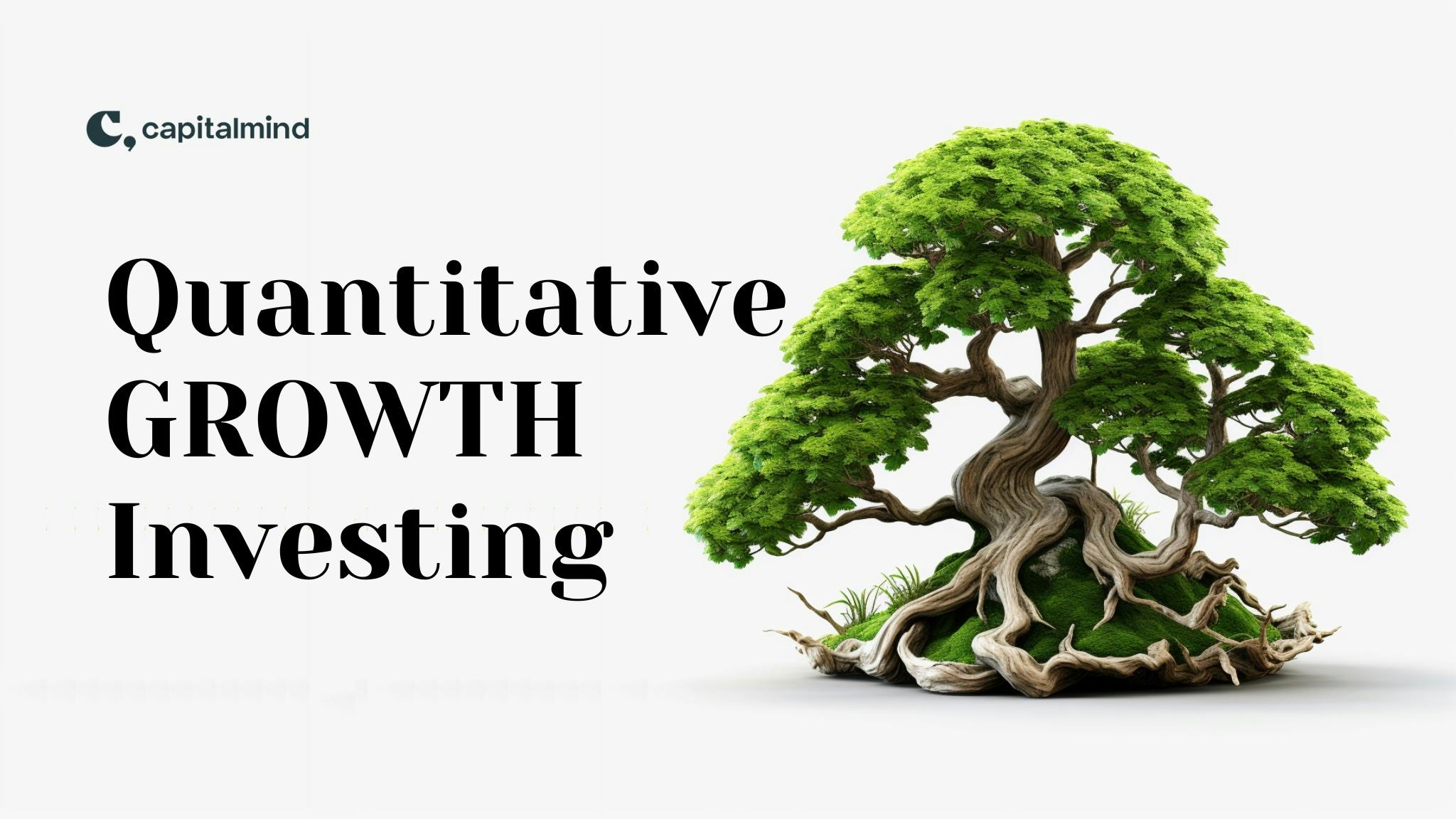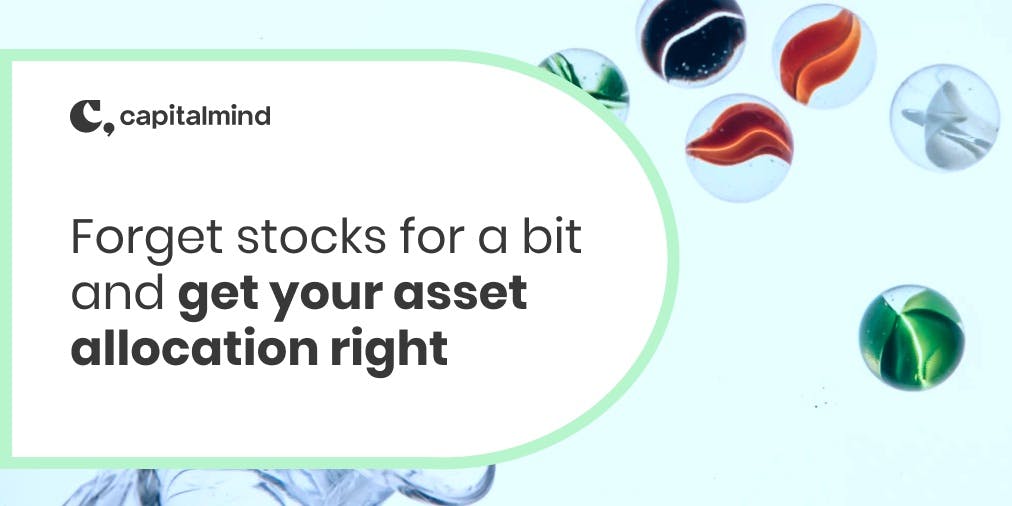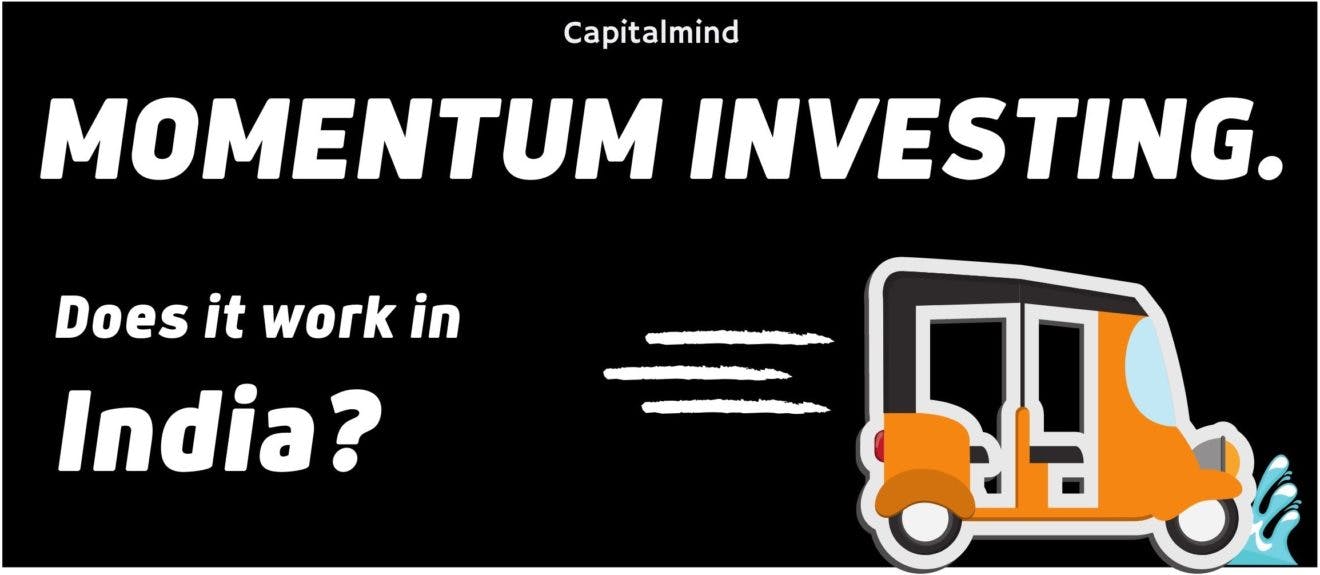(category)Personal Finance
How to make better decisions: A critical life meta-skillHow to make better decisions: A critical life meta-skill
David Lee Roth, lead singer of Van Halen, a popular rock bank of the 1980s would insist on a bowl of M&Ms (mutli-coloured candy) backstage, but with all brown M&Ms removed for every performance. Turns out this was not just rock stars being rock stars but a mental tripwire to ensure flawless concert performances. When was the last time you regretted a decision you made? Maybe it was an impulse purchase on an untested commerce site that proved a nightmare to deal with. Or a decision to quit a job for another that didn't pan out how you had hoped. Or maybe you were left wondering how you ended up paying so much more for your car than you originally planned. Investors nurse long lists of regrets. Exiting a stock to then see it double after. Piling into a stock or strategy seemingly at its top only to watch it drop like a stone. The biggest regrets of course tend to be actions not taken. Often out of inertia to change the status quo. Or resistance from imagining worst-cases that never came about. Making decisions is a critical life meta-skill. One where even minor improvements can offer compounding impact over time. This post is a summary of some of the best insights from various resources on making better decisions.
Anoop Vijaykumar•

Investors nurse long lists of regrets. Exiting a stock to then see it double after. Piling into a stock or strategy seemingly at its top only to watch it drop like a stone.
The biggest regrets, of course, tend to be actions not taken. Often out of inertia to change the status quo. Or resistance from imagining worst cases that never came about.
Making decisions is a critical life meta-skill. One where even minor improvements can offer compounding impact over time. This post summarises some of the best practical insights from reading some of the best books on decision-making.
Van Halen and brown M&Ms
Van Halen was one of the most successful rock bands of the early 1980s. They were the quintessential rock band when being a rock band meant big hair, cocaine, and groupies.
They were also notorious for their concert riders. A "rider" is a set of demands that the concert hosting venue is expected to fulfil as part of the legal obligation for the band to perform.
Riders can include specific technical requirements for a band's performance, like a specific piano model, hospitality riders specifying the alcohol brand to be made available backstage, to more, umm... unconventional requirements. Queen, the band, once required a mud-wrestling ring to be set up (with wrestlers) outside their dressing room for use after a performance.
Van Halen, and more specifically, their lead singer David Lee Roth, required a bowl of M&Ms backstage as a standard rider. Oh, and the bowl had to have all brown M&Ms removed.

Screenshot below of the actual page from their contract.


For those curious about the other conditions, read the 11-page rider document here.
Turns out, this was more than rock stars being pains-in-the-rear-end.
Van Halen was among the first bands to put on elaborate sound and light productions for their concerts. If David Lee Roth found a brown M&M, he'd ask for a line-check of the entire production, guaranteed to find a technical error. In other words, brown M&Ms were a mental tripwire telling him that the stagehands had not paid attention to the contract. And catching flaws in advance was instrumental in putting on a successful show.
Mental tripwires are a decision-making tool. To snap you out of "mental autopilot" and force a decision.
We need better tools
We are constantly making decisions from little ones like what to have for breakfast to mid-size ones like which refrigerator to buy to massive ones like relocating countries for that new job or even quitting to join the gig economy.
Faced with a decision to make, most of us apply the default method of mentally running through the pros and cons of the options under consideration. And pick the one that feels better at the time. But what option feels better is almost literally determined by how we feel at the time.
Based on what we were exposed to leading up to a decision, we are in either "avoid bad outcomes" mode or "pursue good outcomes" mode.
A college application might face contrasting outcomes depending on whether it appeared before the admissions official right after his morning cup of coffee or just before his delayed lunch.
Our reaction to a potential real estate investment opportunity is likely to vary depending on whether we recently finished streaming The Big Short by Michael Lewis or reading The Millionaire Real Estate Investor by Gary Keller.
What's more, we tend to follow the same template while making a range of decisions. Be it picking where to order our next meal to deciding whether to move houses.
This often happens with investment decisions. In a rising market, funds and strategies with recent outperformance see the most inflows (pursue good outcomes, also called FOMO). In a falling market, even liquid funds get questioned for their ability to protect capital (avoid bad outcomes).
We need better tools to make better decisions.
Decision-making is a core life skill. Having the ability to process a lot of information correctly is only useful if it enables good decision-making. And good decisions are not evident post-facto based on the outcomes. Just like choosing to drive through a red light and emerging unscathed on the other side of the intersection is not evidence of a good decision.
So, how do we improve the quality of your decisions?
Knowing when not to decide
...or picking a random option.
Reducing the number of decisions themselves is a good starting point. Before spending time and mental effort on a decision, ask, What is the penalty for a wrong decision? How easily can it be undone?
The smaller the penalty, or the easier it is to reverse, the faster you can go. Picking what cuisine to order. Selecting a Netflix show. Deciding what to wear to work. Repeatable low-consequence decisions should not get too much mind space. Instead, have preset defaults or just chosen randomly.
A lens from How to decide by Annie Duke: Apply the happiness test. Will this decision significantly impact my happiness in one week / one month / one year? This is easy to miss. Picking a slightly cheaper rental apartment a torrid commute from the office will have much more impact on your happiness than deciding between two car models.
Reduce the absolute number of decisions you make so you can reserve your mental energy for the ones that matter.
Choosing not to decide or doing it quickly is not just for trivial decisions. Any time there is more than one great option, there is little downside to picking quickly.
Between two great jobs, you have as much information you're likely to have. Between Rome and Paris as holiday destinations. From Barry Schwarz's Paradox of Choice, one way to tell if you're facing an "any option is great" situation is to ask Would I be happy if either of these was the only choice? If yes, pick one and move on.
Knowing you want to invest in a NIFTY ETF and spending inordinate time and effort deciding between five different options. Avoidable.
This line from Barry Schwarz's can give us pause "Time spent dealing with choice is time taken away from being a good friend, a good spouse, a good parent, and a good congregant."
Knowing when someone else should decide
From his letters to shareholders, helpfully collated in Invent and Wander, Jeff Bezos classifies decisions at Amazon into Type 1 (consequential and nearly irreversible) and Type 2 (important but reversible). On type 2 questions, decision velocity is important. But they are not inconsequential, so you can't just pick one option and move on. At Amazon, Type 2 decisions are made by high-judgment individuals or small groups.
Think of "high-judgment" as an individual(s) particularly equipped to take a specific decision based on expertise earned from experience.
In individual contexts, we violate type 2 decision-making all the time by overestimating our expertise. It's time for a new TV. You're not a consumer electronics native. Last time you bought one, the options were LCD vs LED. Now you find you need to decide between LED, QLED and OLED. A google search later, you do.
Instead, relying on your technophile friend who likes reading about the subject for fun is a more reliable source. Shane Parrish calls it the work required to have an opinion.
Investors pick fund managers, presumably to do better than they themselves would. Then form an opinion based on what stocks the fund manager holds. That's like asking an electrician to fix your circuit board, then having an opinion on his competence based on his chosen tools. An unfortunate side-effect is some fund managers pick stocks with the most marketable stories "You can't go wrong with this high ROE market leader (at any price)!".
What if you don't yet have faith in the professional's ability? That's a different, more fundamental problem. Step back to observe whether they recognize the probabilistic nature of investing, the non-trivial role of luck, whether they explain good results as undiluted brilliance and poor results as outside factors. Those are more relevant inputs to the decision than their current set of holdings.
Bezos added an interesting comment in his 2017 letter about high standards being domain-specific. We know this intuitively.
After winning the third straight championship with the Chicago Bulls in 1993, verifiably at his peak at age 30, Michael Jordan announced his retirement. He switched to playing baseball for the Birmingham Barons, an affiliate team of the Chicago White Sox. Think of an affiliate team as a lower rung on the hierarchy of the sport. His stats in the 127 games he played in 1994 were not particularly good. Remember, this is the most gifted and driven professional athlete of the era, possibly of all time. When the baseball season stalled because of a lockout in 1995, Jordan made his NBA comeback. After a readjustment period, his legendary work ethic enabled him to do what he did best, win basketball championships. Excellence is domain-specific.
After some level of professional, business, even investing success, it's easy to believe our experience and skills are suited to any environment. A good decision-making framework tells us when that might not be the case and lets someone else make the decision.

If it makes it through the "avoid" filters, then you know you'll need to figure it out.
Six steps to better decisions
A standard set of tools can help improve quality overtime for the consequential decisions you know you have to take.
1: Make some space
In Thinking, Fast and Slow, the subject of Nobel-winning research kickstarted the field of behavioural finance with its list of nearly 150 cognitive biases. In the book, Daniel Kahneman made a statement that, if internalized, it will improve the quality of most of our decisions, and probably, our lives.
Nothing in life is as important as you think it is, while you are thinking about it
It took me a couple of passes to get it the first time I read this line.
In Decisive - How to make better choices in life and work, the authors call it "the spotlight effect". The super-emphasis some information that is front-and-centre takes on when making a decision, at the cost of other equal or even more important factors.
Advertisers and good salespeople got this a long time ago.
"This Xtra turbo model goes from 0 to 100 kmph in just 2.5 seconds. That base model takes all of 3.2 seconds."
"Quick note, this apartment you seem to be (mildly) interested in has an interested buyer, and they might come back with an offer anytime today."
It's not just shiny advertising copy; we do this to ourselves when making decisions.
"This hotel room is ideal on location and budget, but this other one has an additional 5% discount and unlimited nachos!"
"This fund looks good, but its TER (total expense ratio) is a whopping 15 bps above that other one."
Whatever is in the spotlight, whether relevant or not, is probably driving your decision. The first rule when deciding consequences, step back to make some space.
2: Create more options
Include options that arise out of not picking any of the currently available options.
Upgrading a laptop might offer a slight productivity bump, but not upgrading right now can mean kickstarting a new fitness routine with a personal trainer.
Purposefully move "the spotlight" around to identify whether the original decision is really the one you need to be making. If you still come back to the original question, then you know it probably is the right frame.
3: Zoom out to check base rates for your options
Considering base rates means if average customer feedback for a product you're considering is 4.85 / 5 stars based on 11,200 reviews, the single negative experience of a friend should not influence your decision.
Base rates do not come naturally to us. An example, positive or negative, close to home described in vivid colour tends to overwrite thousands of anonymous experiences.
This is why training yourself to consider base rates is easily the most important addition to a decision-making toolset.
You're counting on the law of large numbers to form your estimate of something working for or against you.
In How to think about picking stocks, we looked at the universe of almost 1,500 stocks and their overall returns over five years. More than half of all stocks failed to beat savings bank returns over five years, and nearly 1 in 3 lost more than half its starting value. Active stock pickers should keep those base rates at the back of their mind.
4: Then zoom in to look at specifics
It would be a boring world if base rates drove every decision. There would only be one browser. No startup would take on trillion-dollar incumbents. Only in science fiction would humans have a shot at going to Mars. Heck, no one would even go on road trips.
Zooming in means checking if something about the current situation might be an exception to the base rate.
You want to eat Mexican food. Swiggy shows one restaurant, but it's rated 4.4, and you normally only order from higher-rated restaurants. You zoom into the feedback comments to find most of the low ratings are comments about the price even as they say good things about the food. You don't mind the price, so you make an exception and order.
This applies to consequential decisions too. A specific real estate investment opportunity might be perfect because the seller needs to liquidate, and you have unbiased information suggesting potential future developments in the vicinity.
Zooming in is not an excuse to go with your initial gut reaction. It is a specific step after considering how most such decisions go by looking at base rates and then looking for evidence that suggests a deviation from the base rate.
Even when specific information is not easy to get before deciding, there are often surprising ways to test things out. If considering quitting your job to become a gig worker, do it over the weekends to see how it feels and get a realistic sense of potential income. If considering relocating countries, take a week to spend in the very area you'd be living and commuting.
Creating more options can help spur more alternative models of testing the decision out without irreversibly committing to it.
5: Get emotional distance: What would I tell my best friend to do?
Studies examining when people made their worst decisions point to choices made in the grip of anger, lust, anxiety or greed.
We click buy because the lightning deal countdown timer is almost down to zero. We accept suboptimal job offers out of anxiety there might not be another job soon. We jump into the stock market as it makes new highs after having stayed out fretting about valuations.
Since emotions are a common theme in decisions we regret, let them recede before pulling the trigger.
In Decisive, the authors suggest a couple of ways to attain emotional distance:
- Apply the 10 / 10 / 10 framework written about by Suzy Welch. How will you feel about this choice 10 mins from now, 10 months from now, 10 years from now? The idea is to balance the short-term with long-term considerations
- Ask yourself, "What would I tell my best friend to do?" Apparently, we give better advice to others than we give ourselves. This is a good way to shift the frame from short-term auxiliary factors to the big picture, the forest and not get lost in the trees
6: Finally, prepare to be wrong, write things down
We are fantastic inventors of cause-effect relationships. How many times have you said to yourself after the fact, "I knew this was going to be a disaster based on that first meeting!" or the opposite in a great outcome. We have selective and faulty memories.
The only way around is to write things down. Use prospective hindsight to imagine how the decision could go wrong to imagine the range of potential outcomes. And if there's something you can do in advance to avoid some of those negative outcomes.
More importantly, write down your decisions. About to enter into the metal price rise theme? Write the date, stock(s), allocation and a short rationale on "What makes me believe in this thesis". If this is based on reading a bunch of sector reports, name them. Based on a couple of CNBC interviews, say that. A random tweet, that too. Be honest, no one but you is reading this anyway.
Revisit the entry when you exit the position. Do this for every decision. Over time, the journal serves as a great postmortem tool to see whether you get more decisions right than wrong and if there is a pattern to the good or bad decisions. If 4 out of 5 picks of the Twitter kind went wrong, then you know what to avoid.
Clearly, applying a structured approach to making decisions won't be easy the first few times. In our minds, uncertainty acts like a vacuum that needs to be filled by the first most readily available decision. The challenge will be to slow things down and deliberately step through the process. But the longer-term gains of better decisions should far outweigh the short-term pain.
Recapping better decision-making in 10 bullets:
- To improve the quality of our decisions, we need a ready, easy-to-use framework
- We probably more decisions than we need to. Three kinds of decisions are eminently avoidable
- that are low-consequence, repeated and easily reversed (e.g. Steve Jobs and his black turtlenecks)
- where all options are great (i.e. if we’d be happy with anyone option being the only one)
- where we lack the expertise, and that can be outsourced (e.g. 90% of the things we think we are qualified to decide)
- To improve the decisions of consequence
- step back to make some space. What is currently in focus is probably not the most critical aspect
- generate more options by widening the frame under consideration (maybe the cheaper car + a family road-trip > expensive car)
- zoom out to check base rates for the options (how do they generally fare?)
- zoom back in to consider nuances (what makes these decisions more or less likely to succeed)
- get some emotional distance (what would I tell my best friend to do?)
- maintain an honest decision journal and revisit after every decision
Useful reading on decision-making
Decisive - How to make better choices in life and work by Chip & Dan Heath
How to decide by Annie Duke
Thinking, Fast and Slow by Daniel Kahneman
Invent and Wander by Jeff Bezos, Walter Isaacson
Paradox of Choice by Barry Schwarz
The Success Equation by Michael Mauboussin
Some relevant reading on investing foundations
Common sense position sizing for investors
How to think about picking stocks in India
How to think about asset allocation in India [Part 1] [Part 2]
Understanding Financial Ratios
We'd love to hear your feedback and your tips on making better decisions. Find us on Twitter @capitalmind_in and @CalmInvestor.
Related Posts
Make your money work as hard as you do.
Talk to a Capitalmind Client AdvisorInvesting is not one size fits all
Learn more about our distinct investment strategies and how they fit into your portfolio.
Learn more about our portfoliosUnlock your wealth potential
Start your journey today



